
Seliscothon planum
Phillips 1835
This dish-shaped specimen of Seliscothon planum shows typical concentric growth rings, and the upper surface is dotted with numerous, half-millimeter-sized pores, to some degree arranged in concentric rows.
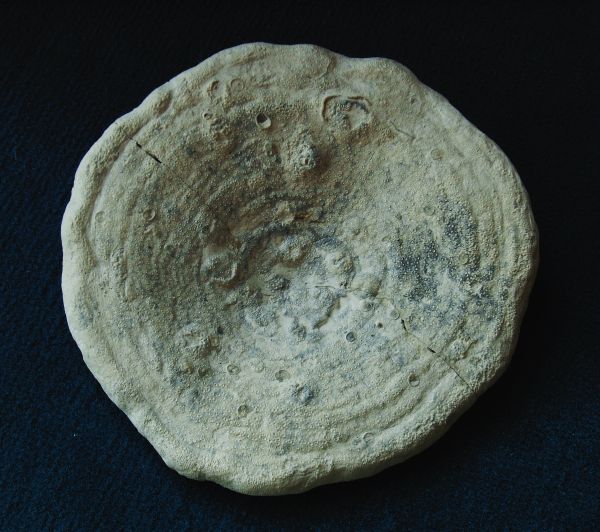
Top view of a medium sized, almost plane specimen of Seliscothon planum. The disc is approximately 11 mm thick and its upper surface shows growth rings and numerous irregularly spaced tiny (0.2 mm) pores (postica) with slightly raised rims.


Etched specimen of Seliscothon planum showing skeletal structures.
The first image shows a sagittal section through a typical funnel of Seliscothon planum, revealing a plumose fibre, particularly in the central stem section, and a more pronounced concentric fibre (growth rings) near the margin.
The second image is a top view showing rimmed postica in the lower (unetched) part, and a radial skeletal fibre in the upper part.
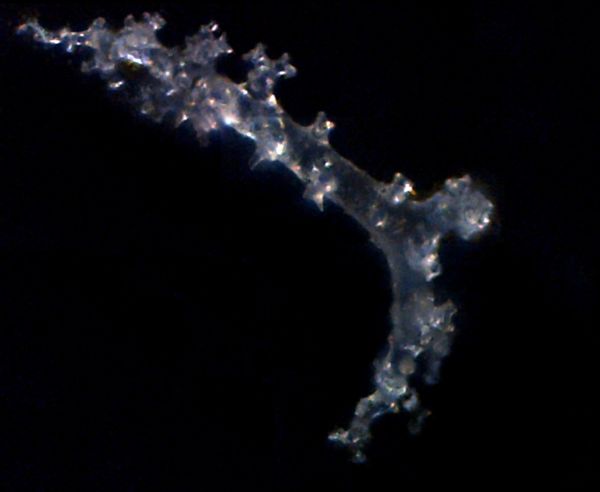
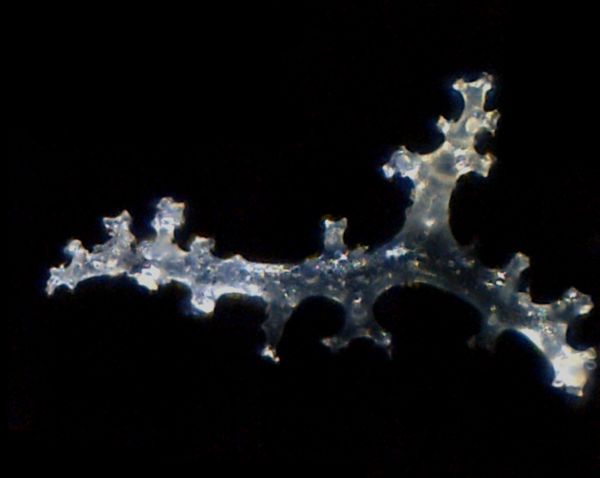
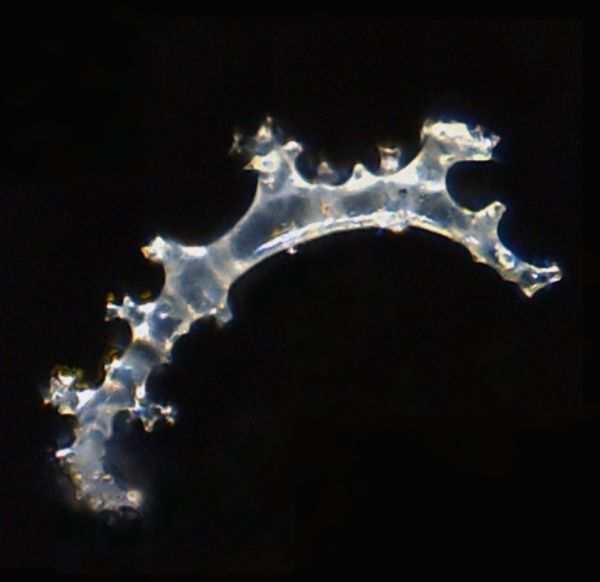
Reflected light photomicrographs of rhizoclones of Seliscothon planum.
These scleres are perfectly preserved in their original, clear to translucent, opaline substance.

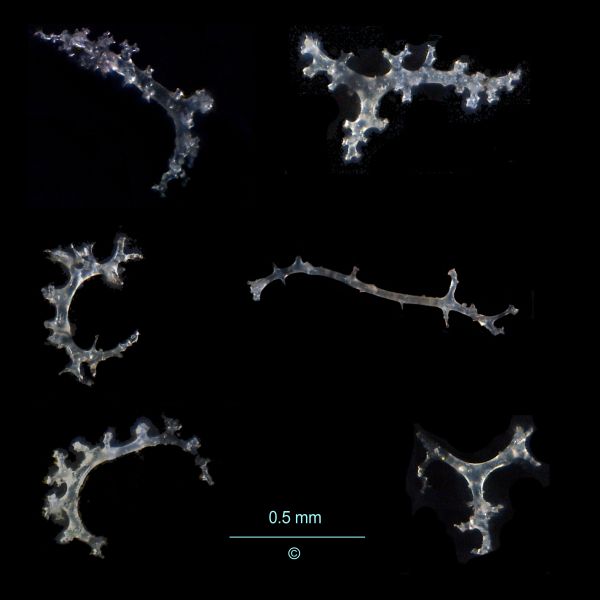

Selection of typical scleres of Seliscothon planum. The first two plates show various rhizoclones. Most of them are arched, and have thorns and side branches on their convex side.
The third plate shows a selection of amphioxes (some with broken ends), some distinctly curved. An axial canal is usually recognizable.

Seliscothon mantelli
Goldfuss 1833
Seliscothon mantelli is distinguished from S. planum by its more pronounced funnel shape and by finer pores, giving rise to a smoother surface.
The first example is a large funnel with a fine striation on the outer surface and densely spaced fine pores on the inner surface.

The second example is a very narrow funnel, perhaps a juvenile form of S. mantelli.
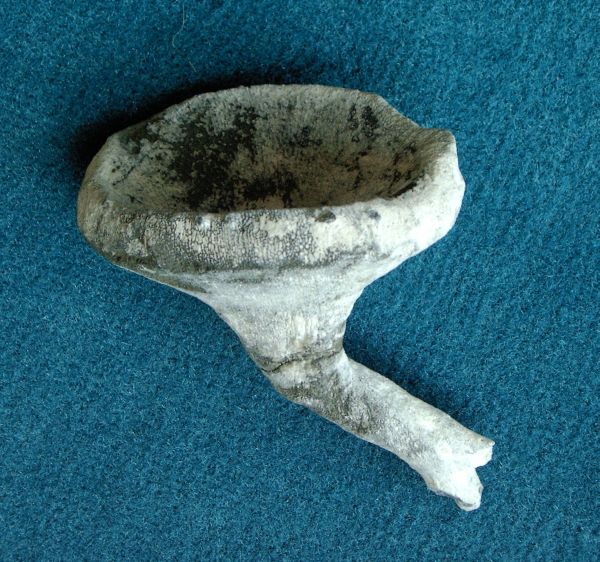
Seliscothon sp.
Another example of Seliscothon sp., with long stem and rather sharp edges against the upper and lower surface. The sharp-edged rim is characteristic of the genus Seliscothon.

Seliscothon sp.
The specimen to the left is not very well preserved, but exhibits the very characteristic radiate-lamellate structure, which is unique to the Family Seliscothonidae.
The skeleton of all Seliscothonidae is composed of rhizoclones, which are densely intergrown inside the lamellae, but with fewer bridging elements across the gaps between lamellae. The interlamellar spaces contain vertically stacked canals which correspond to, and actually are are the cause for the plumose fibre mentioned above.
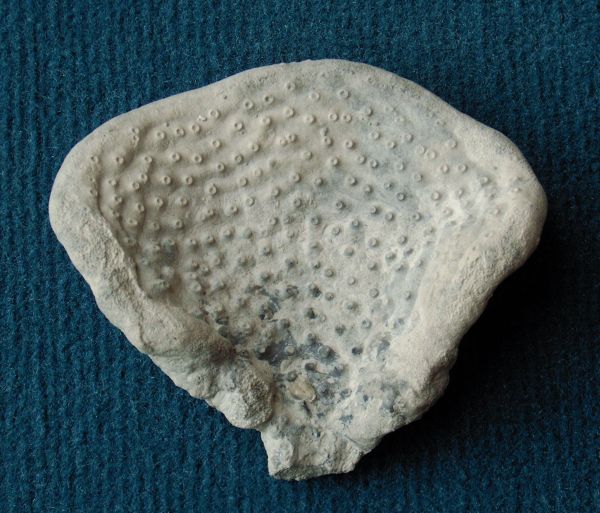

Seliscothon verrucosum
Schrammen 1924
The specimen pictured here from both sides is a very good example of Seliscothon verrucosum, a rare species at Misburg.
Although it looks more like a Verruculina species, Seliscothon verrucosum exhibits the typical radial fibre structure and is also distinguished from Verruculina by its spiculation.


Another small but excellent specimen of Seliscothon verrucosum.
The upper side shows well developed papilliform pores, as well as a rounded margin devoid of such pores. On its bottom side (picture below), the specimen shows very clearly the typical radiate-lamellate structure and some concentric growth lines.